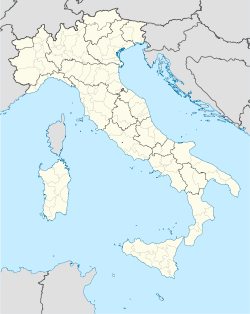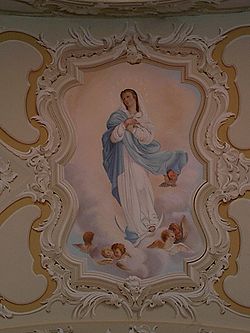- Cicogni
-
Cicogni — Frazione — Location of Cicogni in Italy Coordinates: 44°54′N 9°33′E / 44.9°N 9.55°ECoordinates: 44°54′N 9°33′E / 44.9°N 9.55°E Country  Italy
ItalyRegion Emilia-Romagna Province Province of Piacenza (PC) Comune Pecorara Elevation 700 m (2,297 ft) Population (Dec. 2004) - Total 60 Demonym Time zone CET (UTC+1) - Summer (DST) CEST (UTC+2) Postal code 29010 Dialing code 0523 Patron saint St. Anthony the Great Saint day January, 17 Cicogni is a frazione of the comune of Pecorara (Province of Piacenza) in the Italian region Emilia-Romagna, located about 40 km southwest of Piacenza.
Contents
History
Charles Athanase Walckenaer, in his Géographie ancienne, historique et comparée des Gaules, identifies Cicogni with the fundus Siconianus mentioned in the Tabula Alimentaria Traianea, found in 1747 in Veleia. Surely, Cicogni was a possession of the Bobbio Abbey, established by St. Columbanus in 614, in 1420 it became part of the Duchy of Milan and, in 1545, of the Duchy of Parma and Piacenza; in 1748 (because of the Treaty of Aix-la-Chapelle) it found itself on the border with the Kingdom of Sardinia: ever since, it had a customs office, a prison and a small garrison to vigilate on the borders and on the illegal practice of the contraband. In order to settle this questions, the two neighboring States in 1766 signed a formal agreement where Cicogni is appointed like Ducal Custom. In the 1860 it was united to the Kingdom of Italy, by the annexation of the Duchy. In 1943-1945, during the Second World War, some partisans were killed by Nazis around and in the village itself. One of them, Mario Busconi (killed on the path that leads to the cemetery), was insigned of the Bronze Medal of Military Valor.
Tourism
Cicogni is known for his folkloristic traditions, particularly about the beginning of the spring, celebrated with an its own feast in the first days of May. It's also renowned for the beautiful walkings in its forests (being surrounded by them), full of mushrooms, chestnuts and a wide variety of flora and fauna (especially roe deers, boars and foxes): besides, here it’s possible to taste the traditional dishes of the regional cuisine.(List_of_Italian_dishes#Emilia-Romagna). The village has its own Pro Loco, whose target is the embellishment and the promotion of the place, along with the Municipality of Pecorara.
Monuments
The local church: built in the 1812 (on the ruins of the old one, built in the 15th century), it has a stone facade that hides the interiors, painted in the Rococo style by Angelo Capelli.
References & sources
- Treaty about the borders between the Courts of Turin and Parma – Royal Printing House, Turin 1766
- Molossi, Lorenzo – Topographic vocabulary of the Duchy of Parma and Piacenza – Ducal Printing House, Parma 1834
- Charles Athanase Walckenaer - Géographie ancienne, historique et comparée des Gaules – Dufart, Paris 1839
- Cipolla, Carlo- Corpus diplomaticus Sancti Columbani Bobii– Senate Printing House, Rome 1918
External Links
Categories:- Frazioni of the Province of Piacenza
Wikimedia Foundation. 2010.



